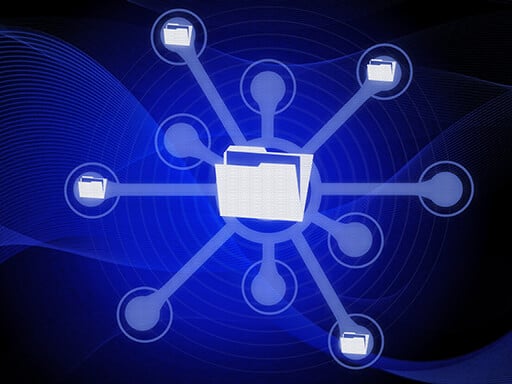Managed file transfer solutions are gaining traction, particularly in financial services, telecommunications, and healthcare organizations. According to Research and Markets, the global managed file transfer (MFT) market is expected to grow at a CAGR of over 6 percent from 2017 to 2025 as more companies adopt these solutions.
Managed File Transfer Technology
However, adopting MFT technology isn’t enough; organizations need to make sure they back up the technology with a strategy that aligns with the organization’s goals, compliance needs, and end users.
The organizations that are most successful with MFT include five key pillars in their strategy. These underpin the technology with user adoption and confidence, allowing MFT to become as much a part of the organization as sending email—but more secure, and with better results. From introducing standardization in the technology itself to making sure end users know the how and why of MFT, highly effective MFT strategies include the following:
1. Standardized Processes
Organizations that are most successful with managed file transfer standardize implementation and rollout to new users, often with automated tools that save time and allow users to self-serve—such as filling out and submitting forms. They also standardize error response, as well as develop methods to eliminate recurring errors—such as failed transfers. This can include automated data classification according to the organization’s policies surrounding confidentiality, integrity, and availability.
At these organizations, much of this can be done with reusable templates, self-service portals, and wizards to assist end users, prevent errors, and enforce policies. These capabilities also save the IT department time that can then be spent supporting more strategic initiatives.
2. Assured Delivery
Users need to expect delivery, not just hope that the documents are transferred to the right places. Companies with successful MFT strategies not only make sure the files are delivered but also have several components in place to make sure it happens: guaranteed file delivery, checkpoint restart, automatic retry after failure, and confirmation receipts. These ensure that files are delivered—and if not, users can immediately remedy the situation, rather than waiting for the recipient to complain.
3. Dedicated MFT Ownership
Companies with successful MFT strategies put one person or team in charge of the process. This point person or persons take full responsibility and clear ownership of MFT, managing and monitoring it. They are the ones reviewing notices of policy violations and security incidents and taking steps to remedy them as quickly as possible, without several departments scrambling to figure out who is in charge. Often, most security or compliance incidents or errors are honest mistakes from well-intentioned employees. Having a dedicated person or team that is notified in real-time can prevent these from spiraling out of control, as well as provide a way to educate end users on the organization’s policies.
4. Full Visibility
Nobody actually wants to hear bad news, but the sooner you know it, the sooner you can manage it. Organizations with effective MFT strategies have full visibility into the file transfer process. They know who is transferring files, whether or not the files were delivered, whether transactions were completed, and who has accessed the information.
A successful strategy captures all this information so that any problems can be identified and addressed well before anyone outside the organization notices that something went wrong. This also lets the organization proactively deal with errors and exceptions: using monitoring and reporting tools like scorecards and dashboards they can optimize processes that depend on file transfers or focus on improving performance where needed to meet service level agreements.
5. End User Education
Left to their own devices, end users will set up all manners of ad hoc file transfer methods: email, FTP servers, consumer-grade file sharing services, and thumb drives, among others. They want to avoid going through IT because it’s perceived as a roadblock. However, these “duct tape” solutions can lead to data theft and breaches. Effective MFT strategies also include the employees: they know why they’re using a MFT solution, and they’ve adopted it because it’s actually easier to use than their ad hoc methods.
And therein lies the key: whatever MFT solution is chosen needs to make life easier for end users so that they’ll more enthusiastically adopt it—rather than look for ways to circumvent it…even “just this once to speed things along.”
Effective MFT strategies aren’t created overnight, but with the right planning and pillars, they can make it easier for your organization to conduct business with partners and customers. If you’re ready to start or improve upon your MFT strategy, reach out to the Eliassen Group team.


